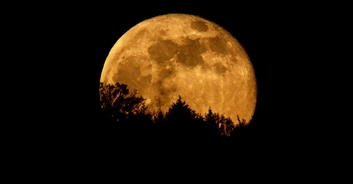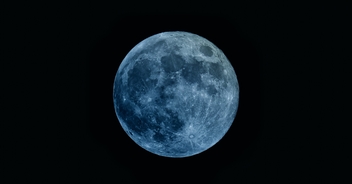The final full moon of the decade arrived at 12:12 am Eastern Time on 12/12. So to be precise, it lit up the sky at 12 minutes past 12 on the 12th day of the 12th month of the year.
Anticipating the event, NASA explained the phenomenon in a blog post:
"The next full Moon is the Cold Moon, Oak Moon, Moon before Yule, Long Night Moon, Uduvapa Poya, the Karthikai Deepam Moon and the Chang'e Moon. The Moon will be full just after midnight on Thursday morning, Dec. 12, 2019, appearing 'opposite' the Sun (in Earth based longitude) at 12:12 AM EST. The Moon will appear full for about three days centered on this time, from Tuesday evening through Friday morning."
October saw the rise of the ‘Tiny Hunter’s Moon’ which set the sky ablaze with the most beautiful orange hue:Astronomy fans were able to watch and take pictures of the full moon because it was opposite a low sun, according to NASA.
"The moon takes a high trajectory across the sky and as it is opposite to the low sun, it will be above the horizon longer than at other times," NASA continued.
Check out these stunning photos capturing the last full moon of the 2010s:
The full moon in December is also known as the Cold Moon "due to the long, cold nights". And as it was the full moon closest to the winter solstice, Europeans named it the "Long Night Moon," NASA explains.
Its other names include the Oak Moon (Europe), Moon before Yule (Europe), Uduvapa Poya (Sri Lanka), the Karthikai Deepam Moon (Tamil Nadu, Sri Lanka, and Kerala) and the Chang'e Moon (China).
Over the night, NASA says it was possible to see five different planets. Jupiter was visible just after sunset, followed by Venus, the brightest planet in the sky, as twilight ended. Saturn appeared less than two degrees away from Venus, and as morning twilight began, Mercury appeared just above the horizon, followed by Mars.



